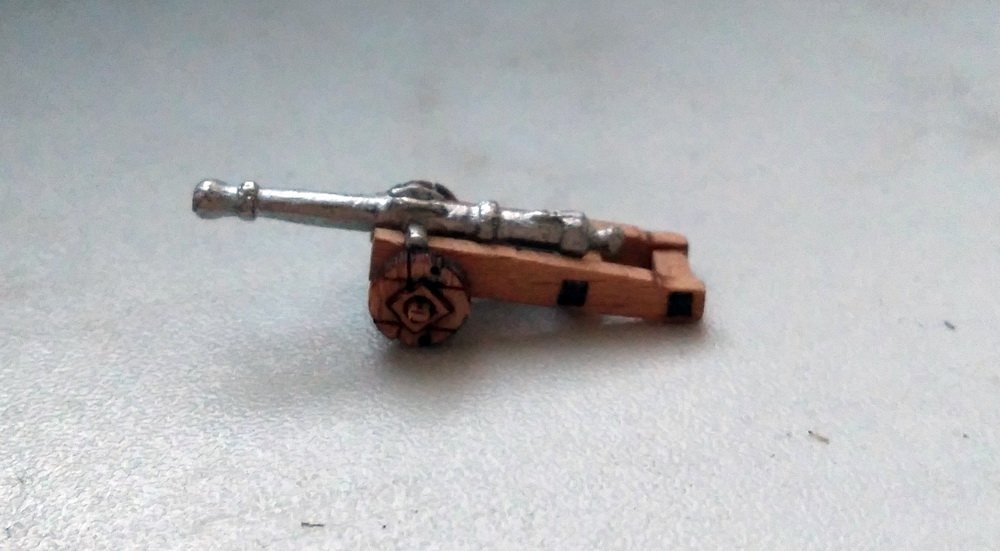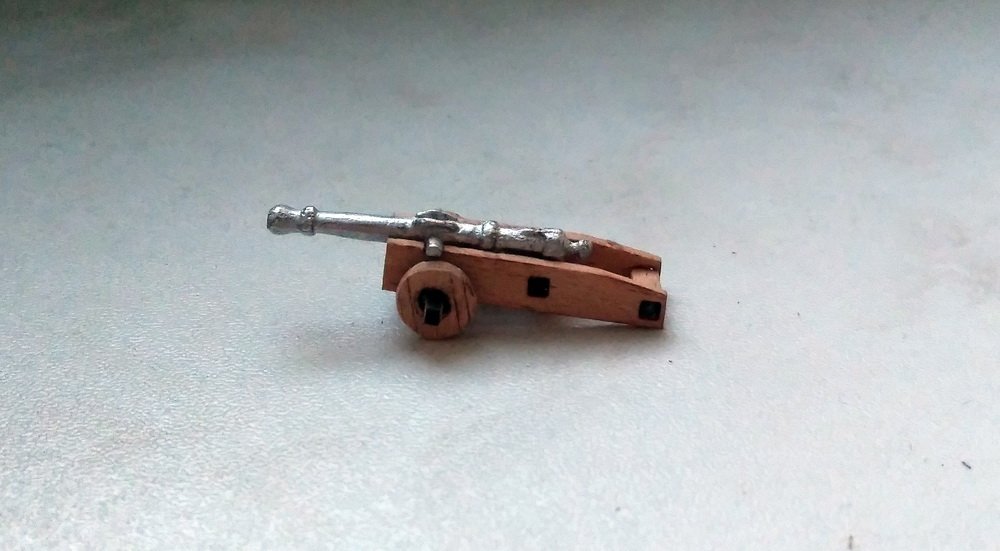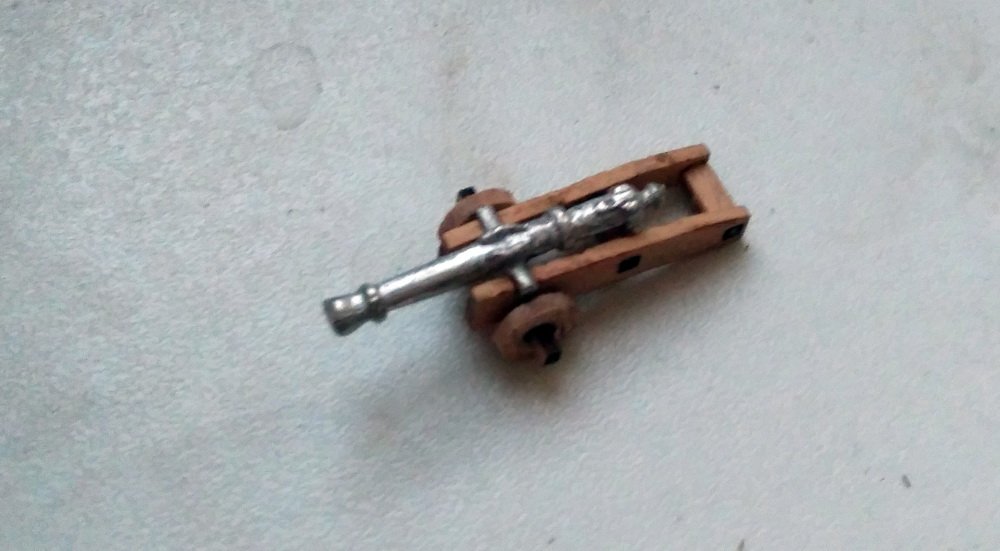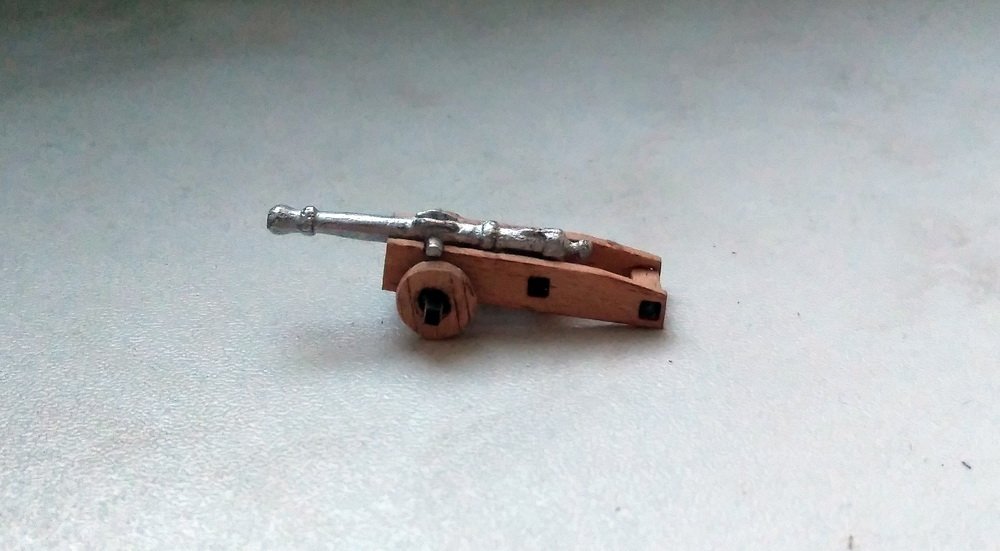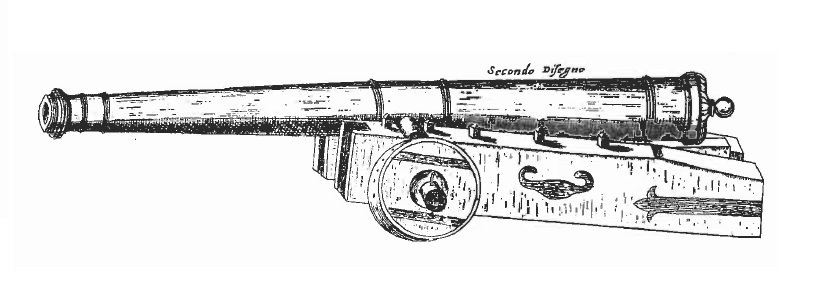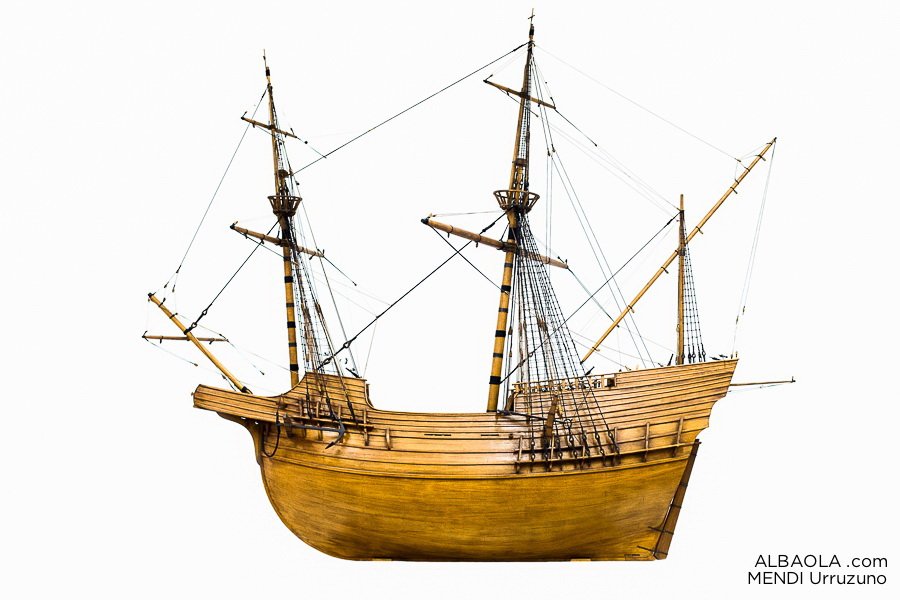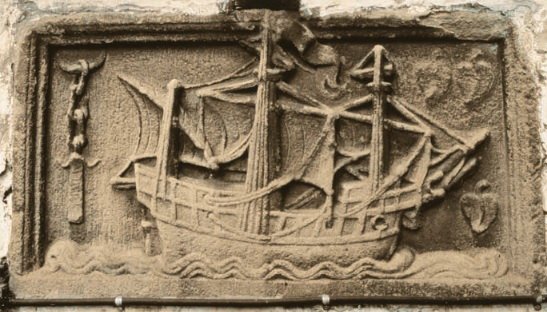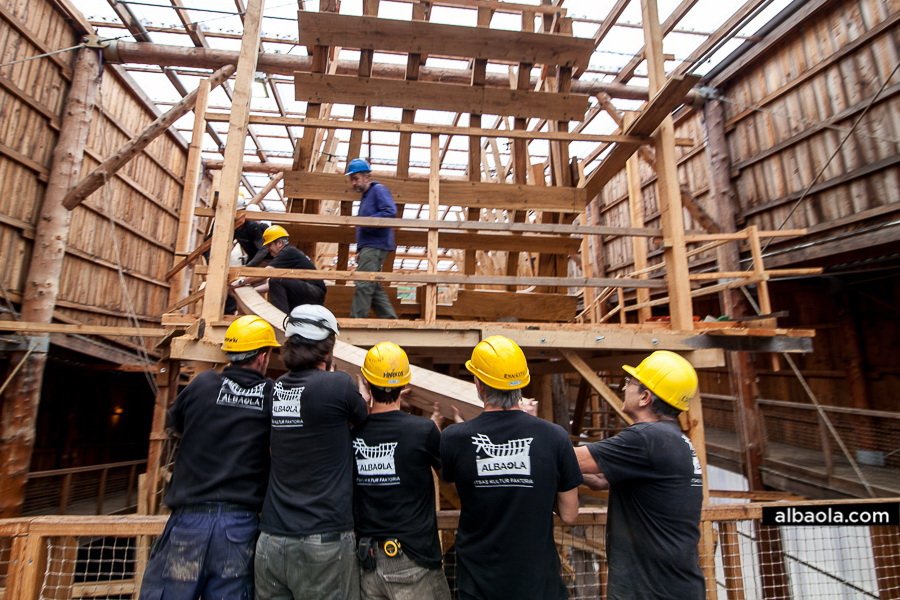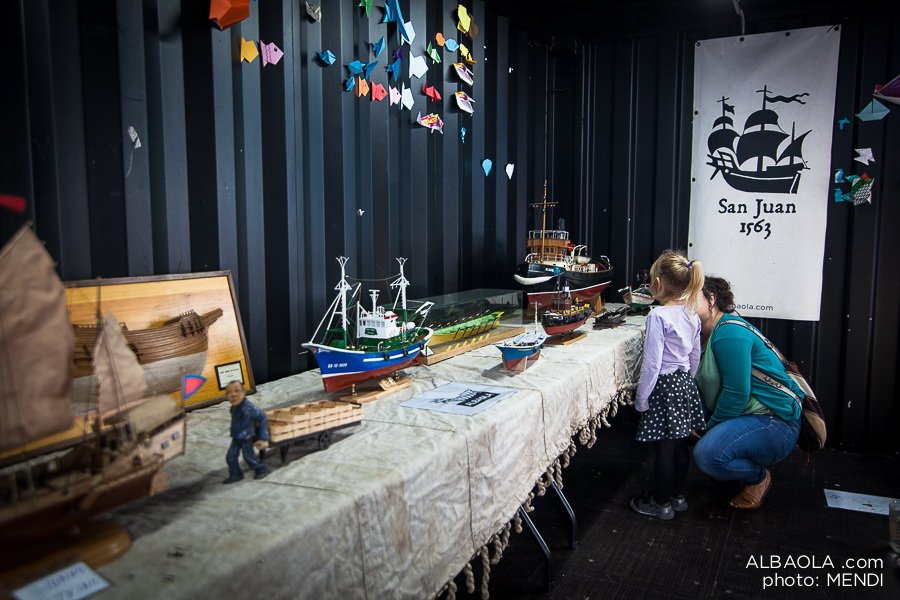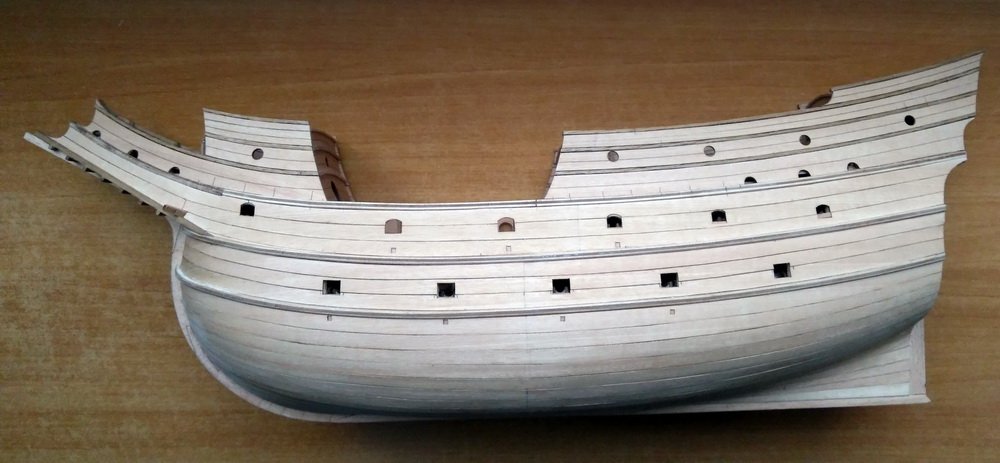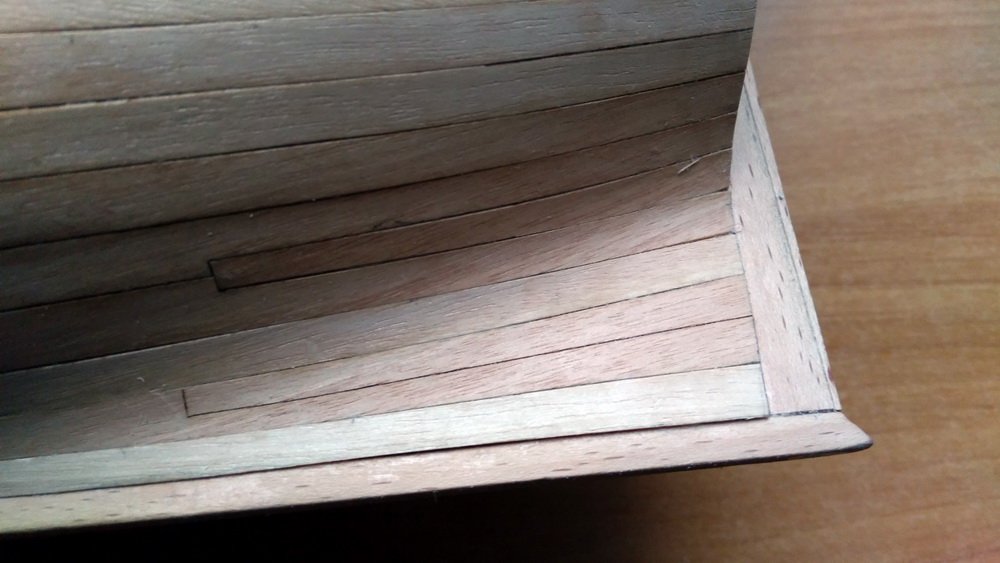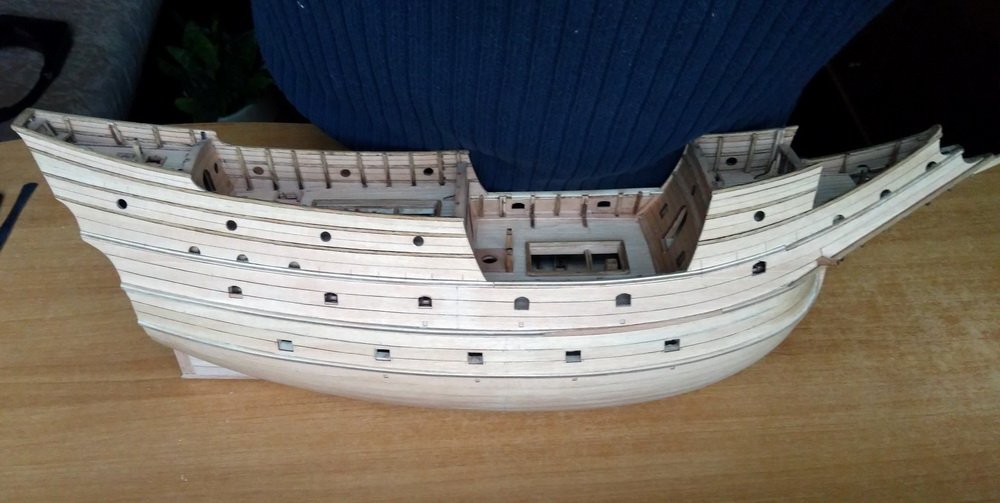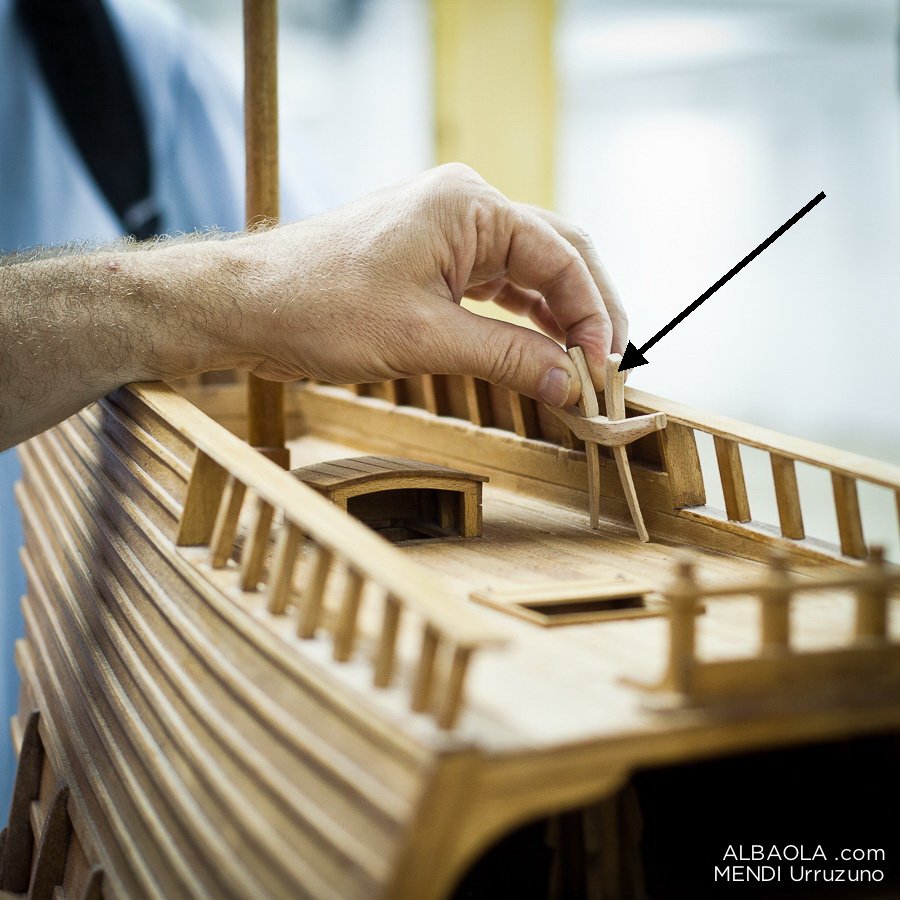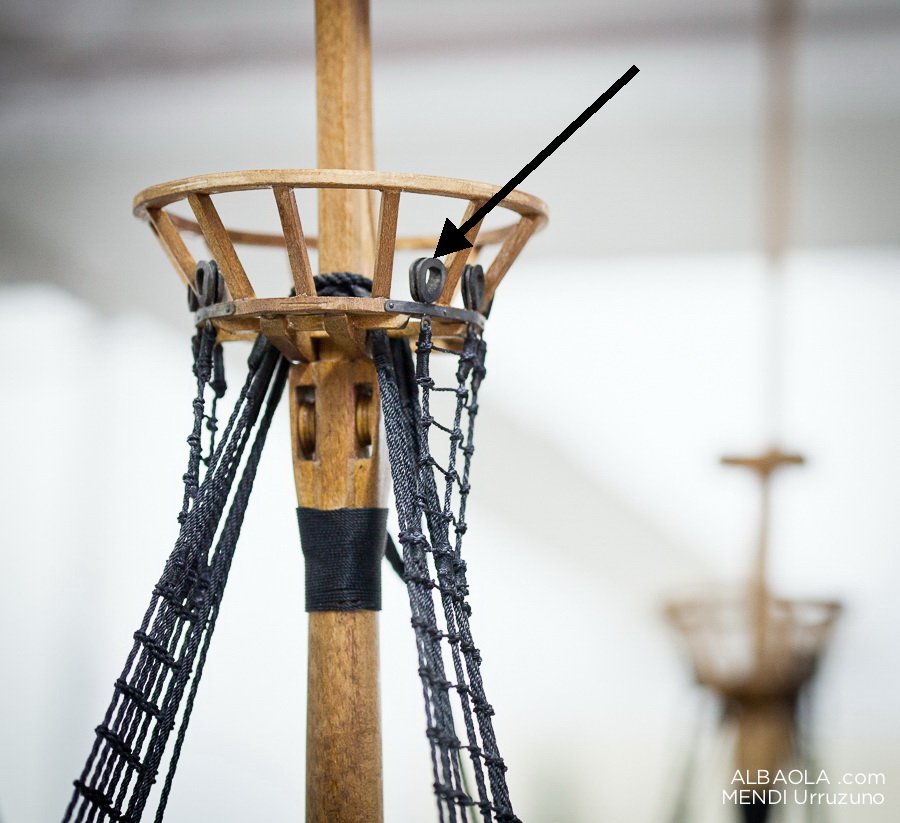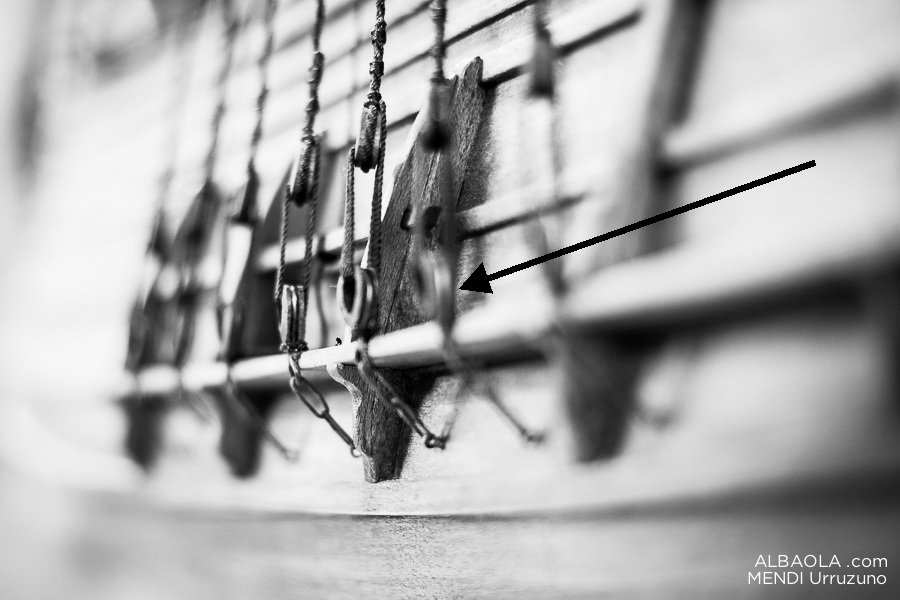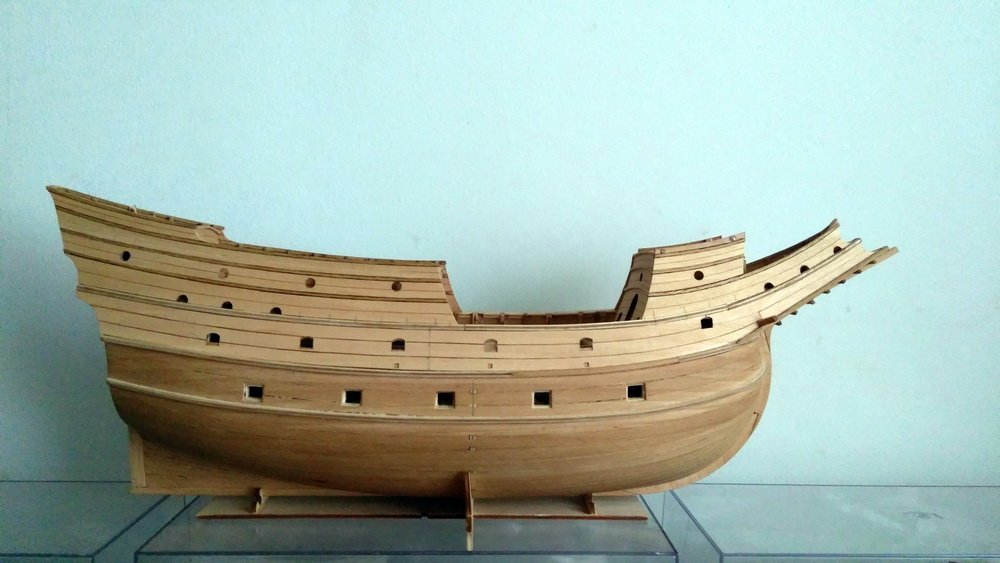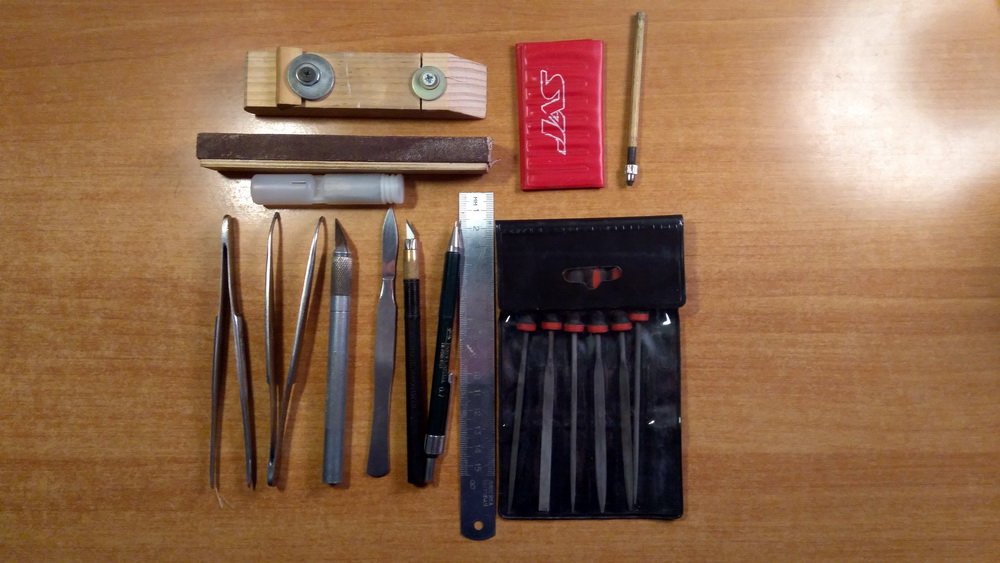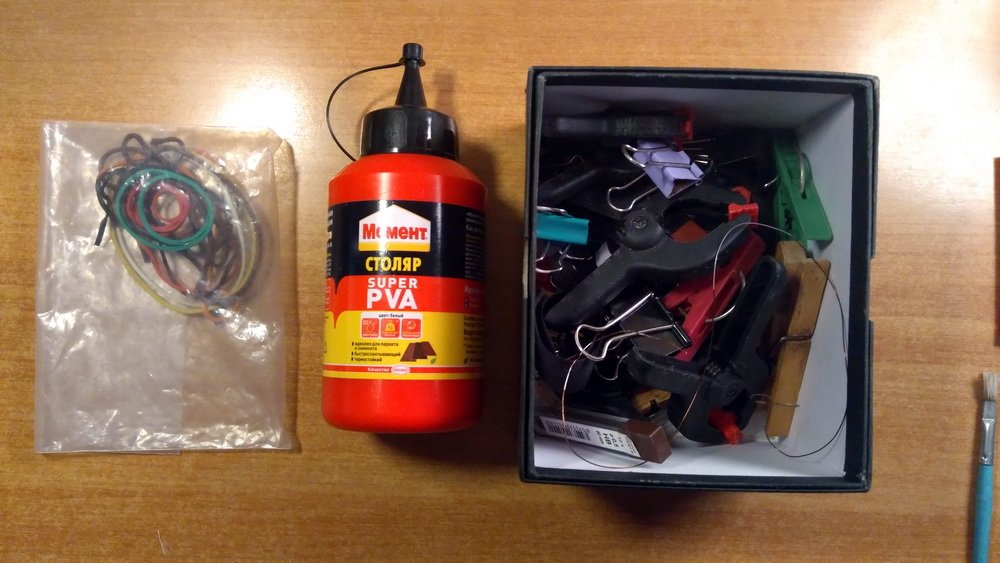-
Posts
76 -
Joined
-
Last visited
Content Type
Profiles
Forums
Gallery
Events
Everything posted by Apxeos
-
A year has passed. Had been ill with COVID-19, went to work. Now I can tackle the galleon model again. As a result of the assembly of the first hull, I modified and strengthened the structure, and did something anew. Now I am assembling the second building in which all these changes have been taken into account. Precision build priorities, so a lot of minor tweaks. I will use the first hull to choose the color of the galleon. The final stage will be the assembly of the third, test hull. Photo at the stage of correction of the primary skin.
-
Hi Patrick, It is believed that grating was already used on Mary Rose. In the second half of the 16th century, this can be said with confidence. Followed your example and renamed your own theme. P.S. Perhaps this link will help with the rigging of Golden Hind: https://www.shipmodeling.ru/phpbb/viewtopic.php?f=3&t=73413&start=885
- 756 replies
-
- galleon
- golden hind
-
(and 2 more)
Tagged with:
-
Wonderful work, Patrick. Very lively captain's cabin. If I remember correctly, weapons were stored in it. I want to recommend you one topic on rigging Pelican / Golden Hind, but I'm not sure that the administration allows links to extraneous sites. Are you also a tankman? Ron
- 756 replies
-
- galleon
- golden hind
-
(and 2 more)
Tagged with:
-
Patrick, thanks for the links! I was familiar with the early work on San Juan, but about 3 or 4 years ago I missed this topic. It was very interesting and informative to get acquainted with how things are now. Particularly impressed with the construction process of the San Juan replica, the team practically does not use electric tools. Now it will be especially interesting, since they reached the stage of construction of the aft and bow superstructures. They were not preserved on the original, there are no data. Also, finally, I got a more complete picture of the San Juan model. She raises more questions for me than gives answers. Why were such strange solutions applied? Perhaps some additional data unknown to me were used. Ron
-
Hello Ab! Perhaps it is the height of the interdeck space that is guilty of the fact that we have got the image of pot-bellied and high-broadside Spanish galleons slowly crossing the Atlantic? Seriously, I think that the great height was offset by the considerable width and depth of the underwater hull. Each nation made ships for its sailing conditions and used local shipbuilding traditions and materials. Even at the end of the 17th century, the ships of the Dutch, English, French and Spaniards confidently differ even in silhouette and individual features of the building. I really like what you make of paper. It turns out a surprisingly accurate form of the hull and a lively image of a real ship. The first time I see such a technology. But for this it’s not enough to have good hands, you still have to be a little artist in your soul. My experience with paper models was rather negative due to the nature of the material. In addition, I like the process of working with wood and its smell. Ron
-
Hello Ab! Thank you for your participation. I agree with your comment on top timbers. Their number can easily be increased by one and a half or even twice. I completely missed this moment. With the height of the decks, not everything is simple, it is a debatable issue. Since the original is presumably a Spanish ship, I focused primarily on the Spanish primary sources. According to them, the standard height of the interdeck space is 3 ½ codos or 3.5 X 0.575 = 2.013 m. García del Palacio, la Instrucción Náutica (p. 1587) & Ordenanzas Carrera de Indias (p. 1607). The Portuguese primary sources of that time give an even greater height - 9 palmos de goa, which is 2.31 m. Oliveira, Fernando, O Liuro da fabrica das naus (c. 1580). This is the height of the deck from board to board without regard to the thickness of the beam. It is clear that this value was not maintained along the entire length of the deck and varied in some places, but in general it was a standard. I did not quite understand the remark about the height of the model. It was the silhouette of the ship in the figure, that is, its ratio of length to height, was the starting point of the reconstruction. If I made a mistake with the height of the interdeck space, it is enough to simply recalculate the scale of the model. The height of the model itself does not change. For example, with a model scale of 1:50, the height of the interdeck space of the original will be 1.7 m, and the length, in turn, will decrease to 20.0 m. Regarding the project on paper, this is interesting. Such a thought did not occur to me. Did you mean a set of assembly drawings or a monograph? Ron
-
Hi Steven! The tenons have only technological value, they allow you to increase the structural strength and correctly position the part. I try to combine the pleasant and the useful, so from the very beginning I developed a model with the prospect of its release as a KIT ship model. This imposes certain limitations in the design. I also have to use only a small number of standard materials (mainly plywood and veneer), which are commercially available for KITS. On the other hand, this allows me to use simple tools for assembly, accessible to any amateur. Ron
About us
Modelshipworld - Advancing Ship Modeling through Research
SSL Secured
Your security is important for us so this Website is SSL-Secured
NRG Mailing Address
Nautical Research Guild
237 South Lincoln Street
Westmont IL, 60559-1917
Model Ship World ® and the MSW logo are Registered Trademarks, and belong to the Nautical Research Guild (United States Patent and Trademark Office: No. 6,929,264 & No. 6,929,274, registered Dec. 20, 2022)
Helpful Links
About the NRG
If you enjoy building ship models that are historically accurate as well as beautiful, then The Nautical Research Guild (NRG) is just right for you.
The Guild is a non-profit educational organization whose mission is to “Advance Ship Modeling Through Research”. We provide support to our members in their efforts to raise the quality of their model ships.
The Nautical Research Guild has published our world-renowned quarterly magazine, The Nautical Research Journal, since 1955. The pages of the Journal are full of articles by accomplished ship modelers who show you how they create those exquisite details on their models, and by maritime historians who show you the correct details to build. The Journal is available in both print and digital editions. Go to the NRG web site (www.thenrg.org) to download a complimentary digital copy of the Journal. The NRG also publishes plan sets, books and compilations of back issues of the Journal and the former Ships in Scale and Model Ship Builder magazines.



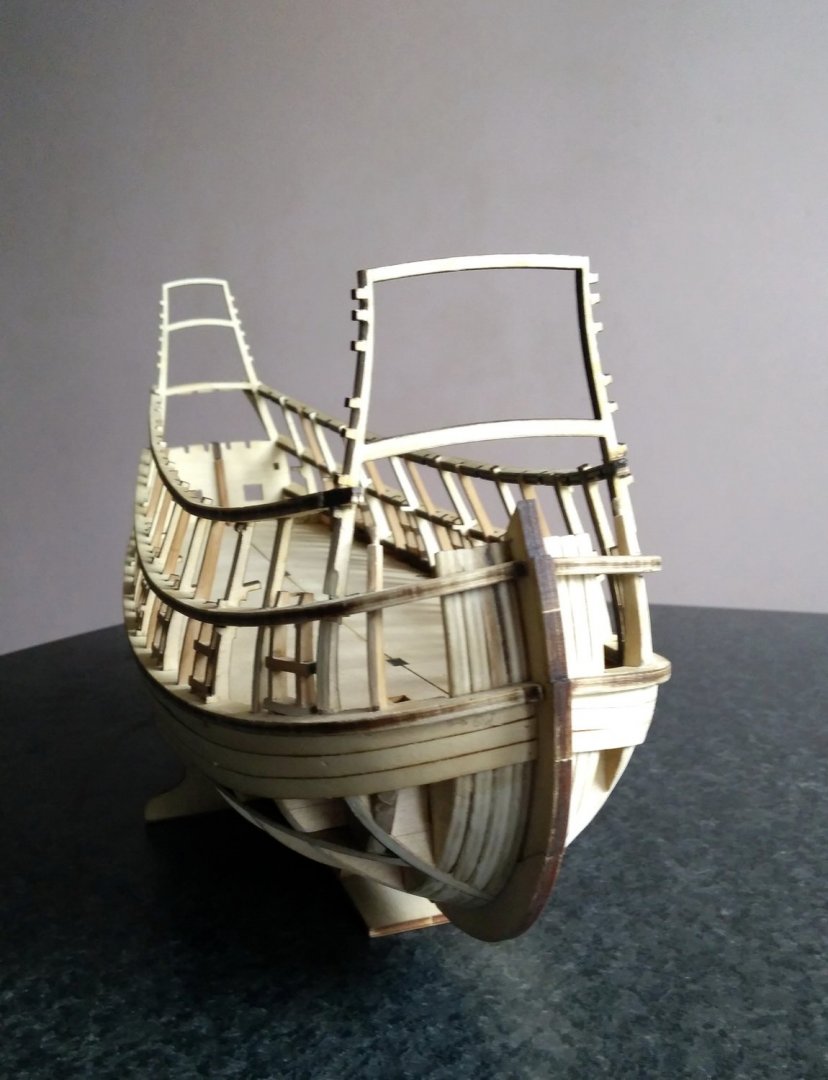
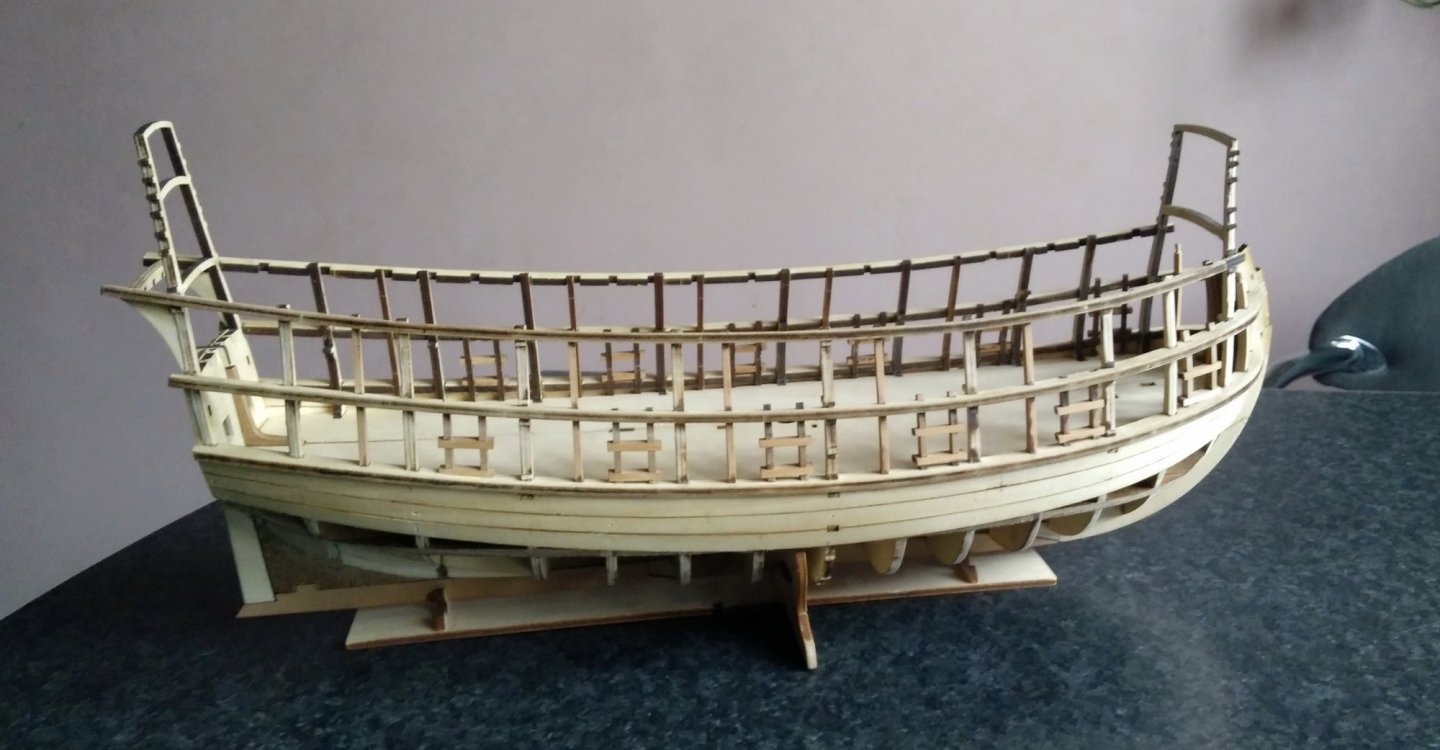
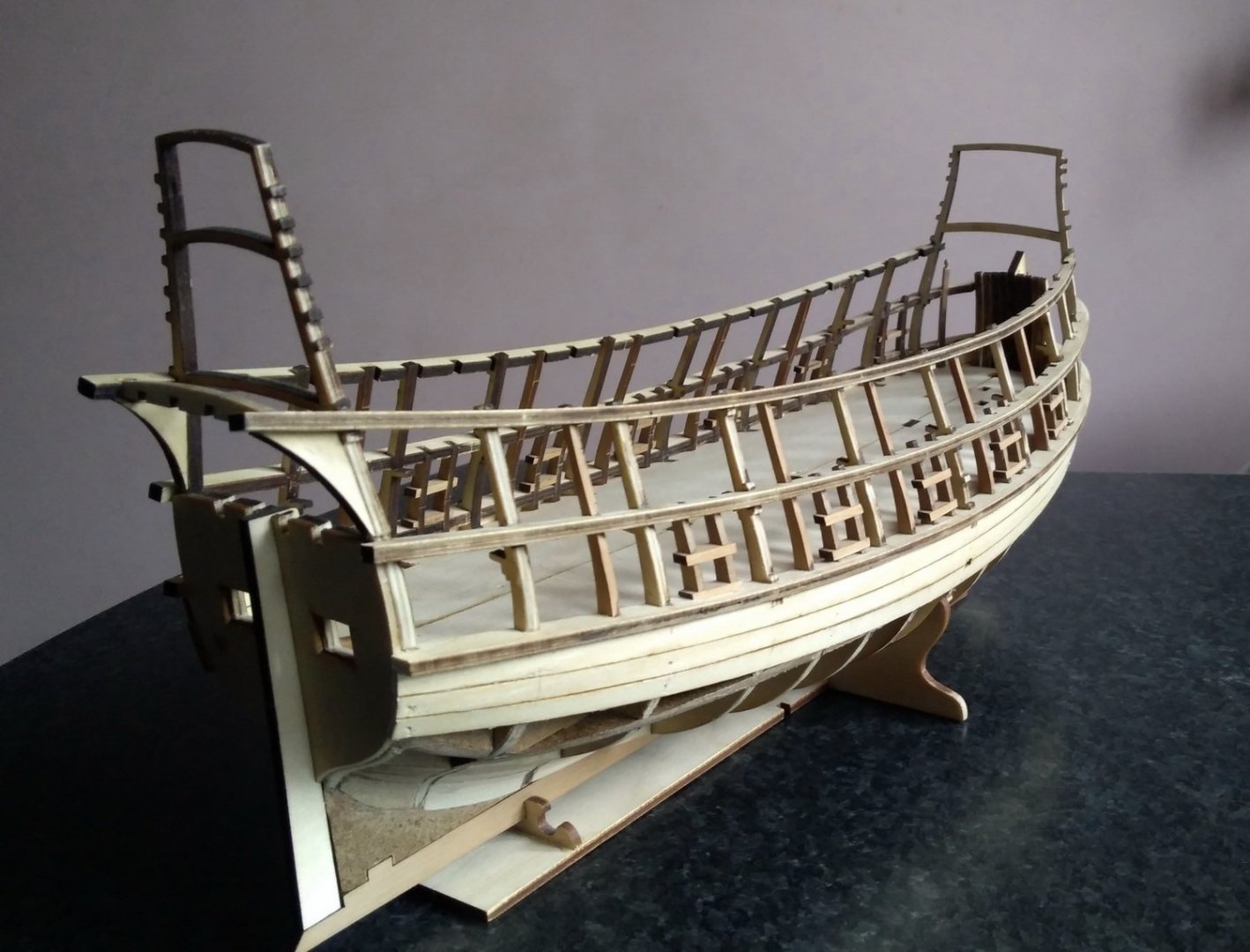

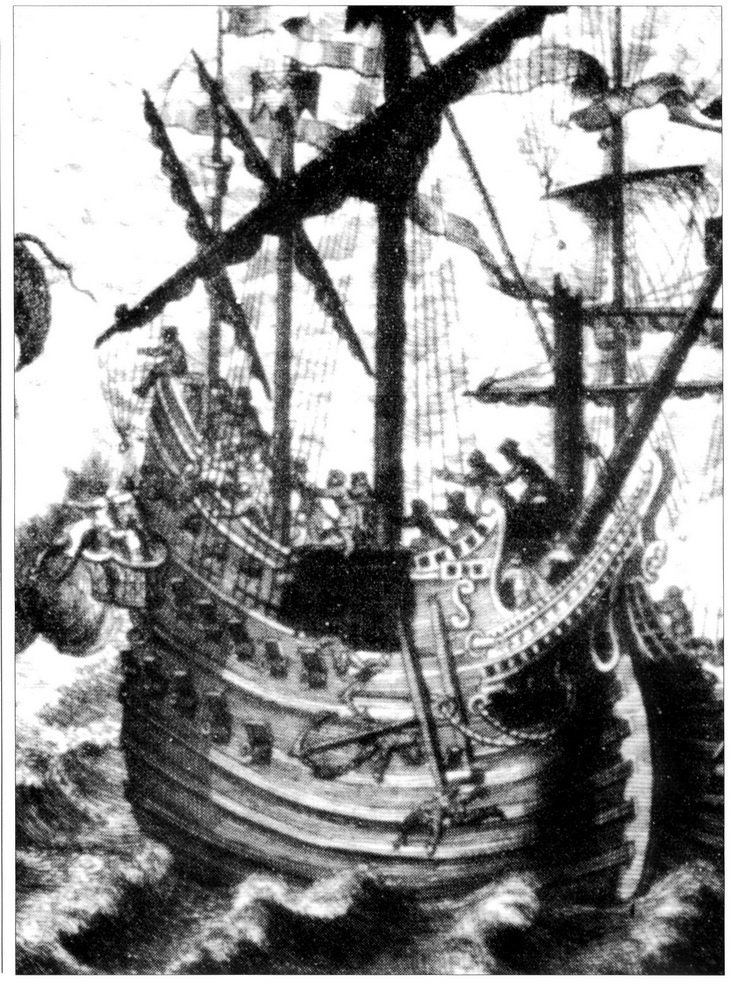
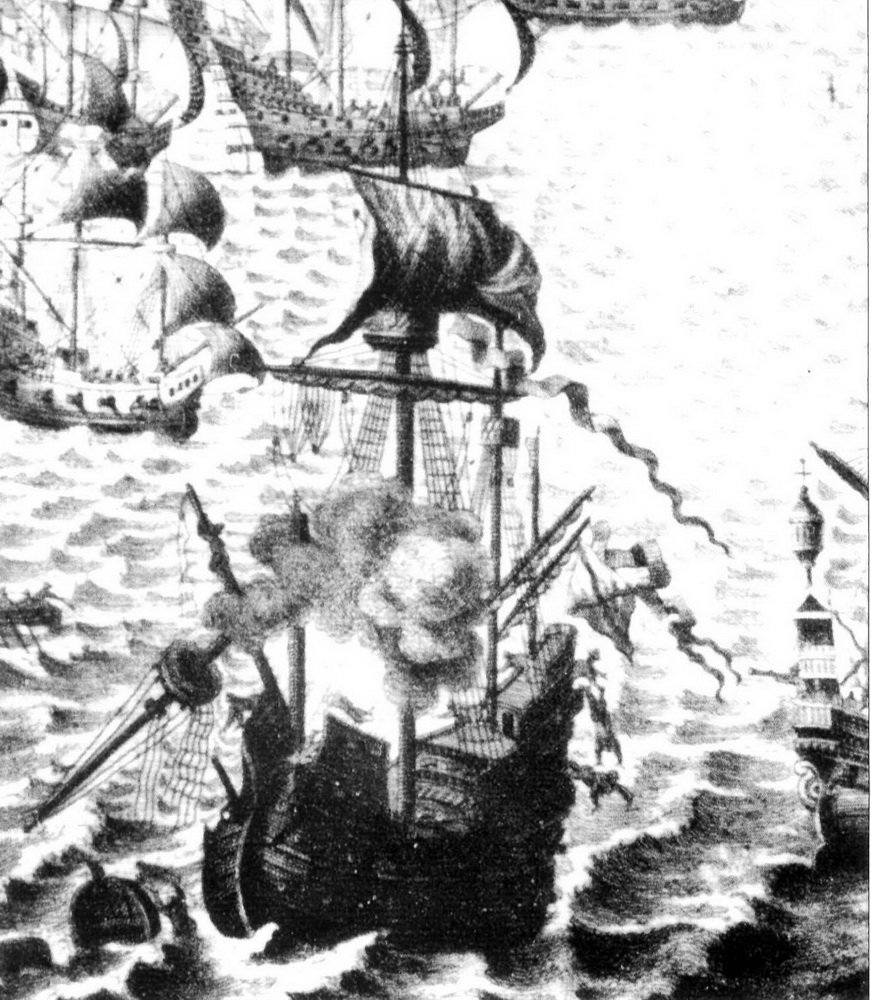
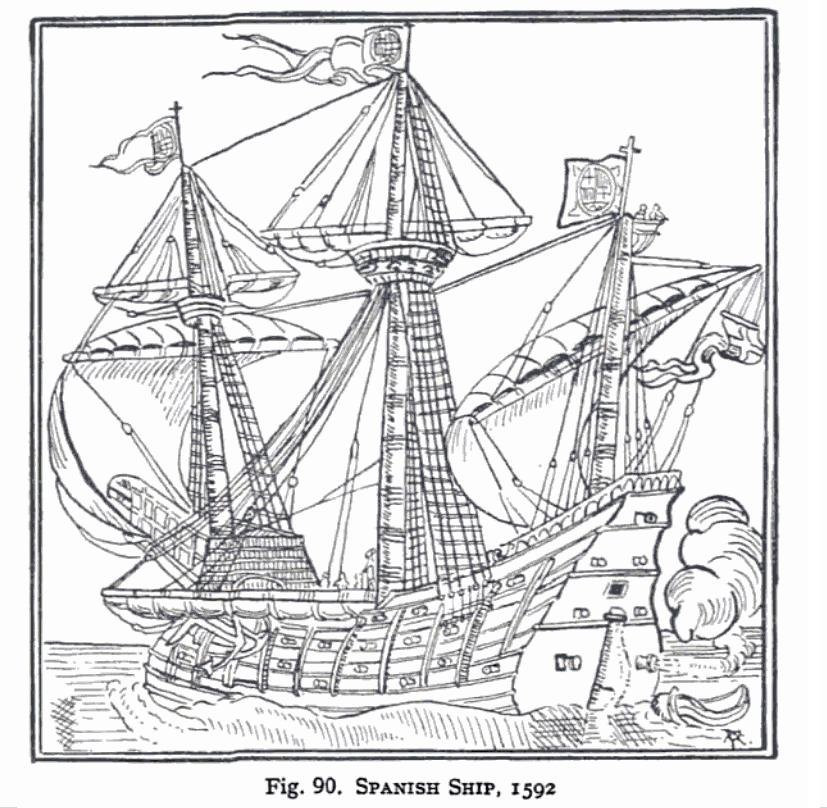
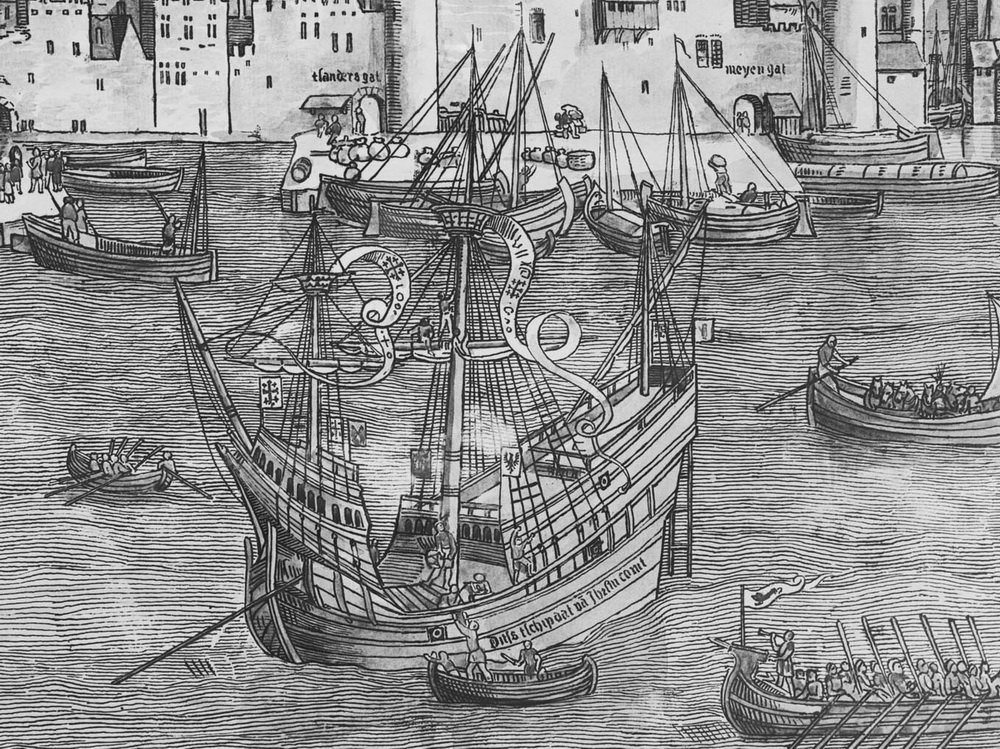
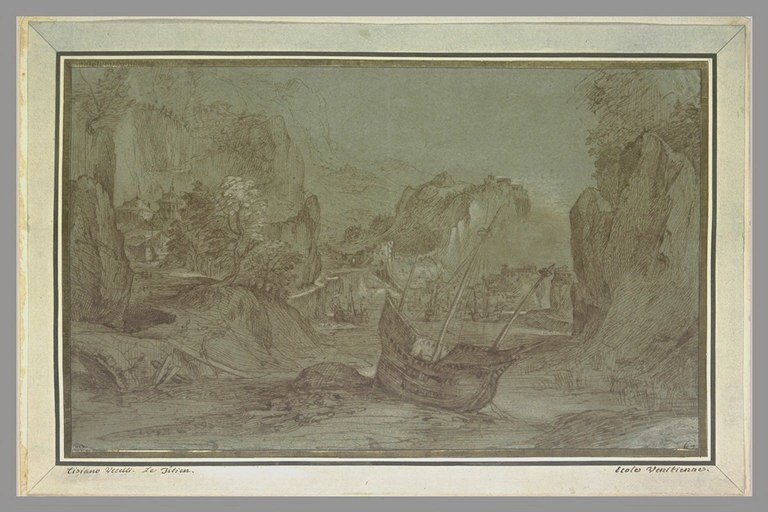
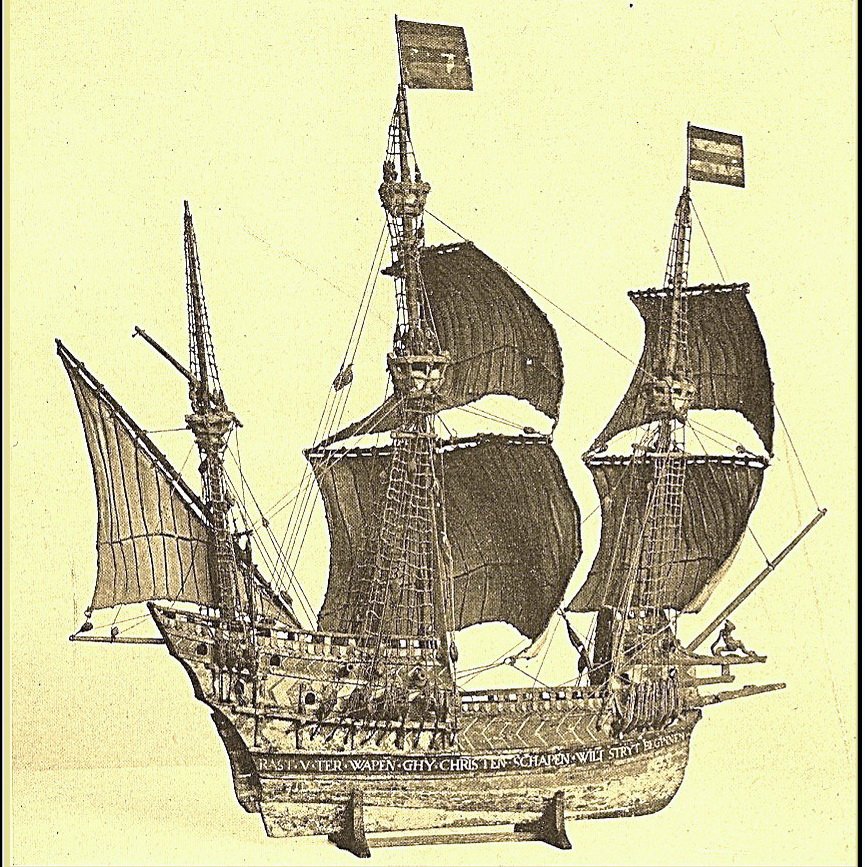
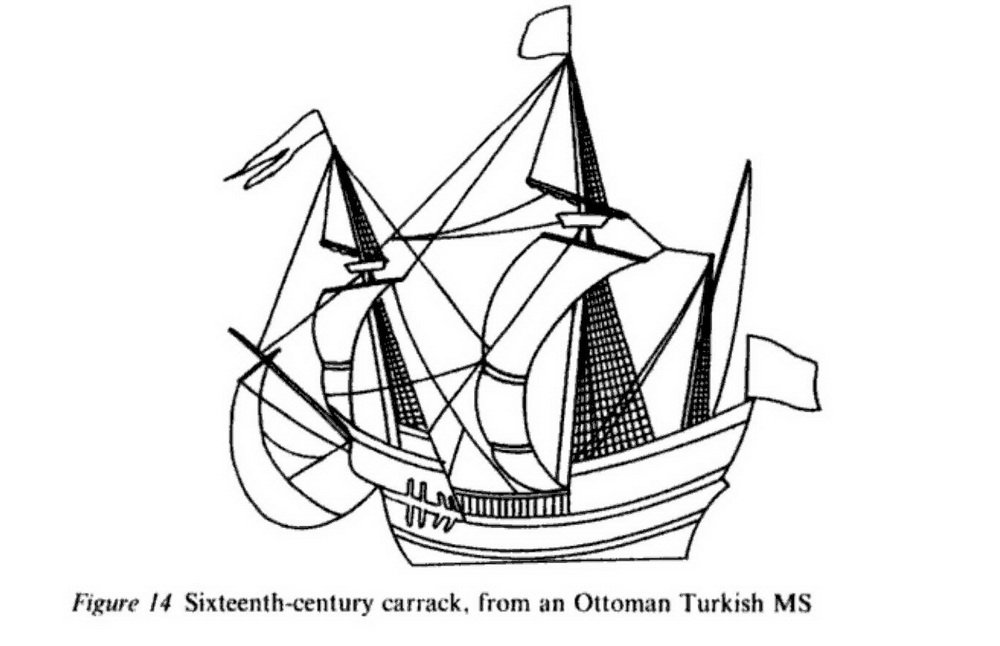
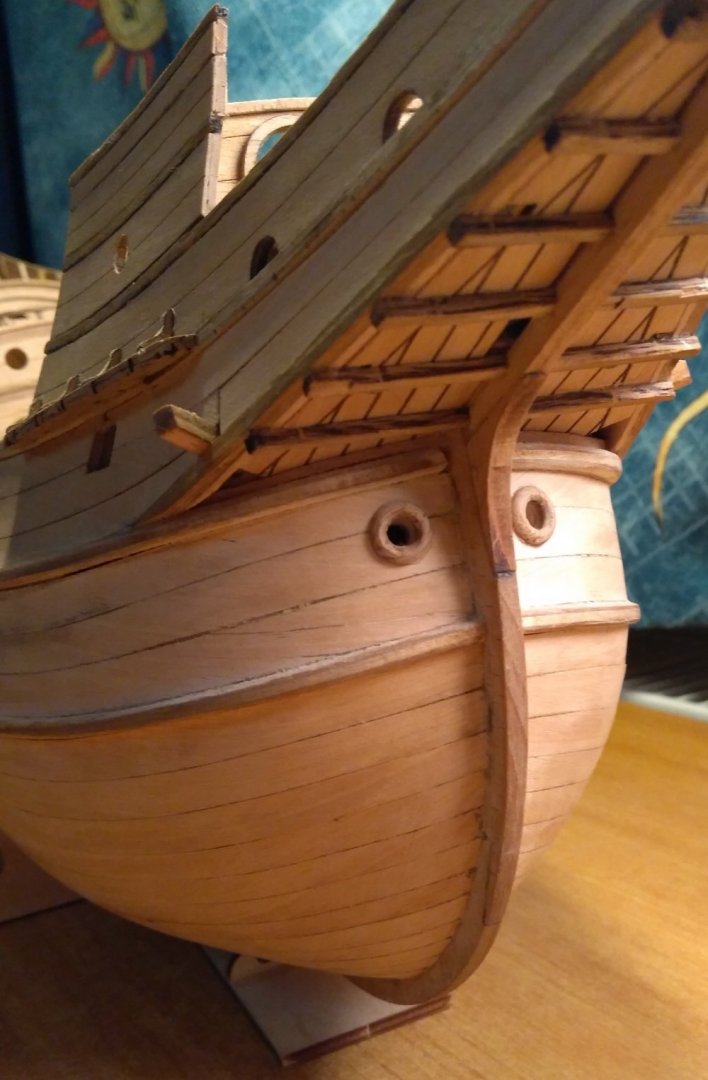
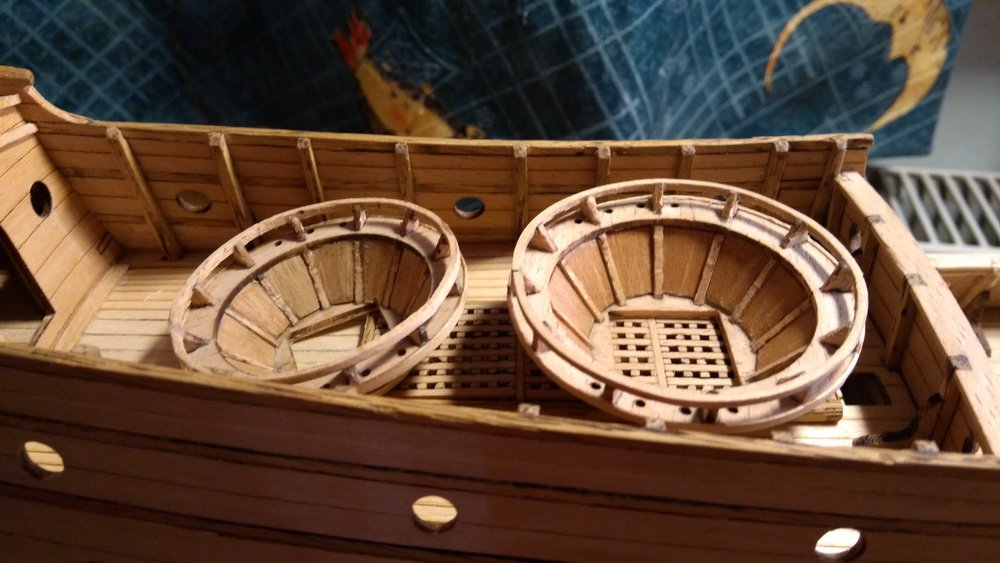
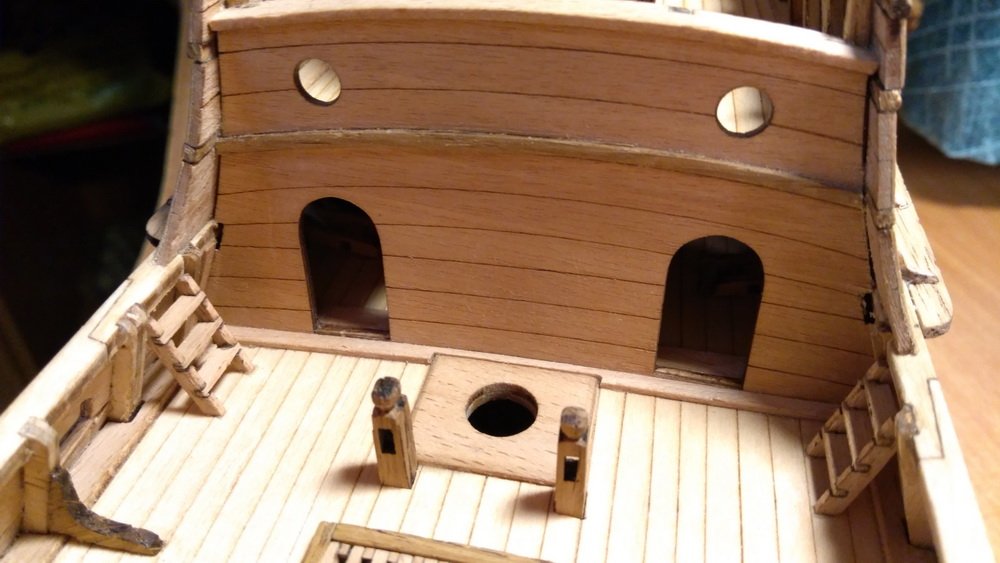

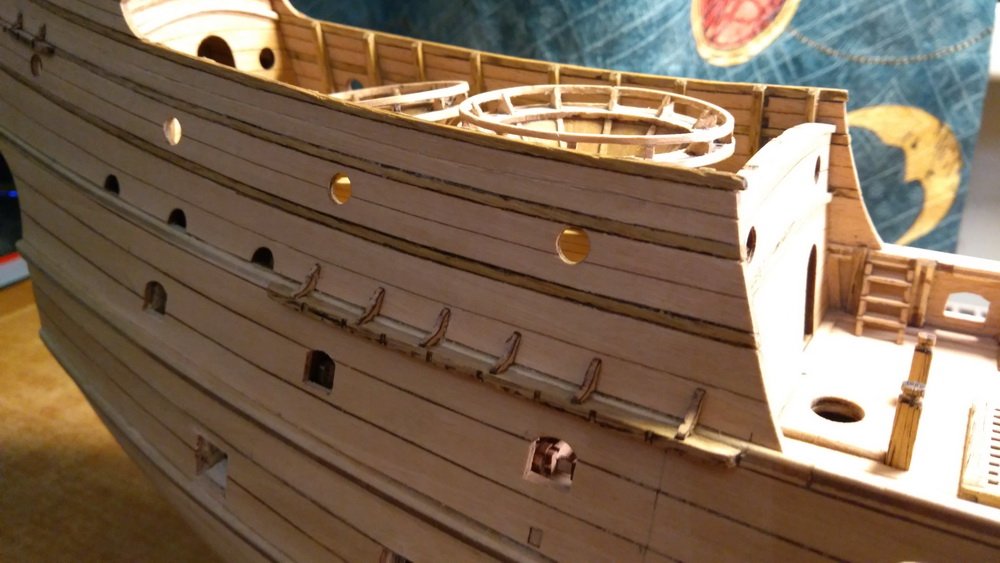


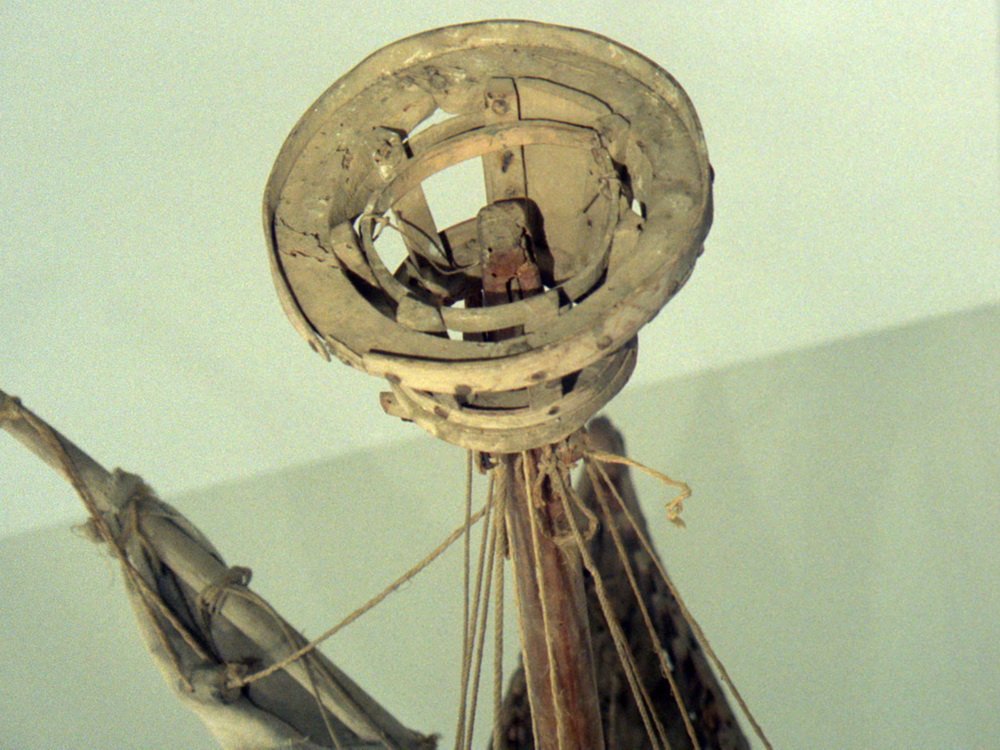

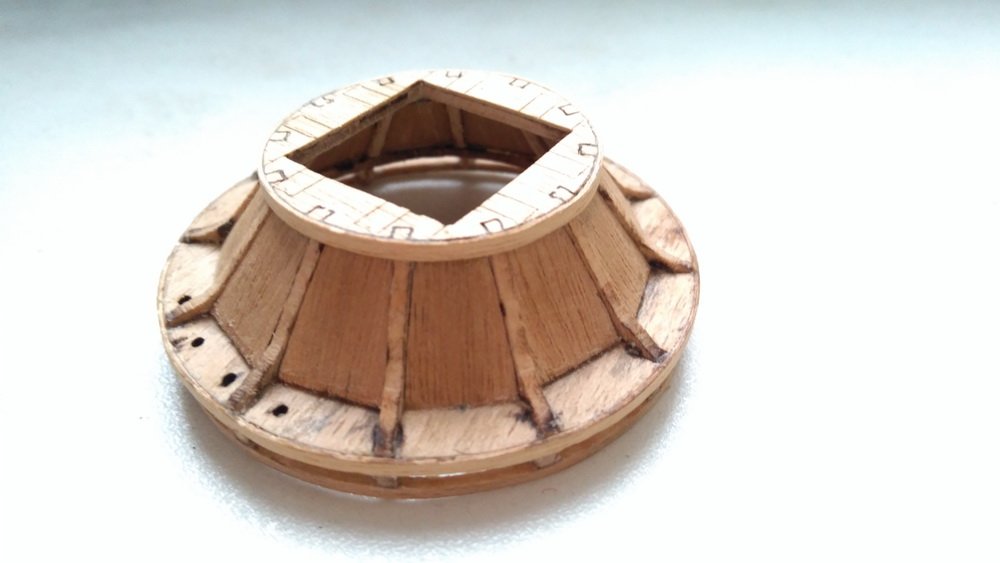
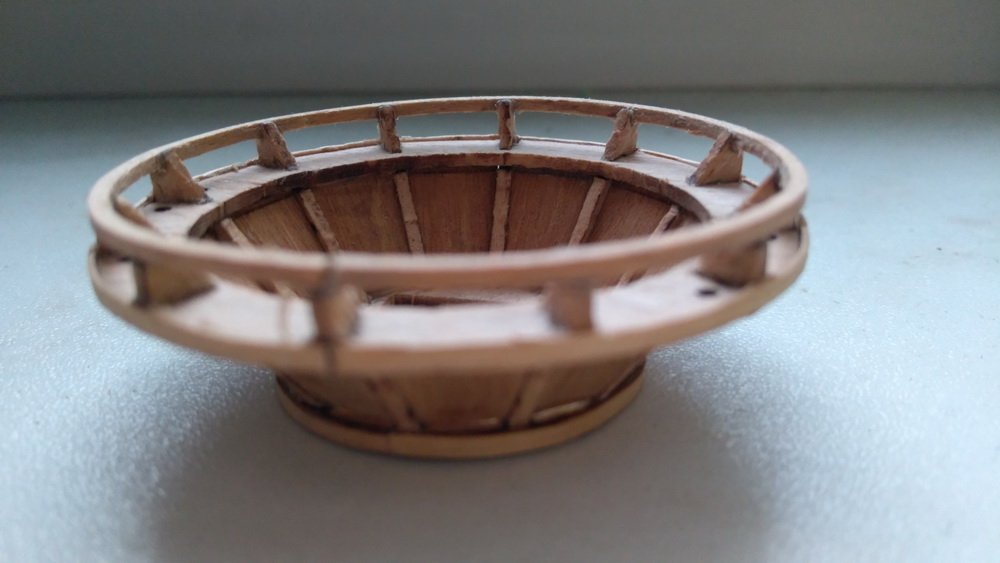
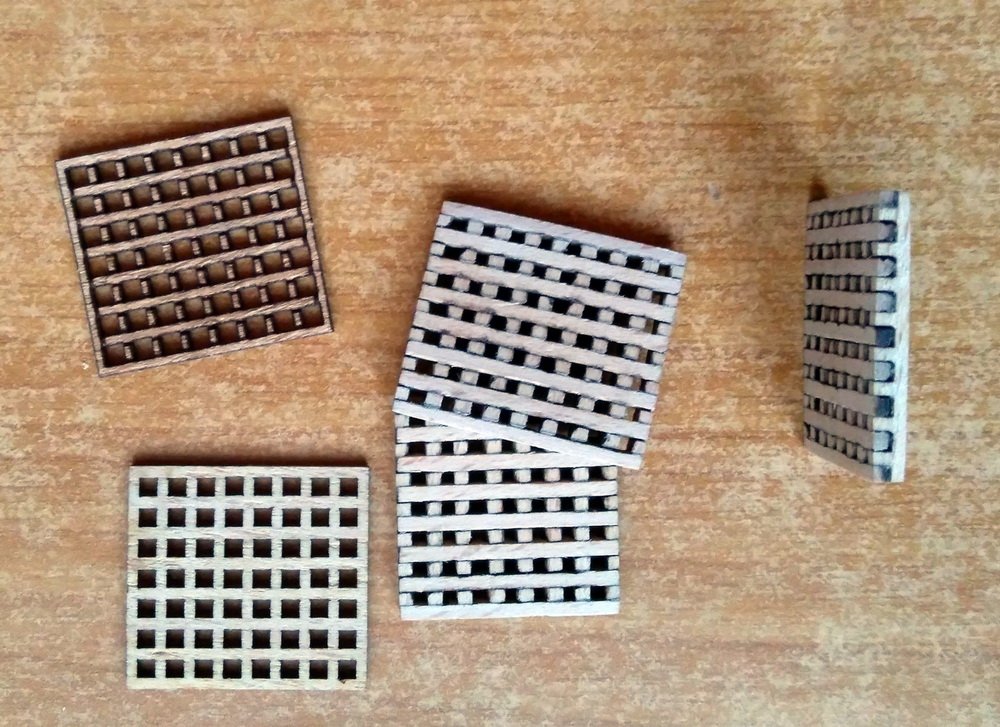
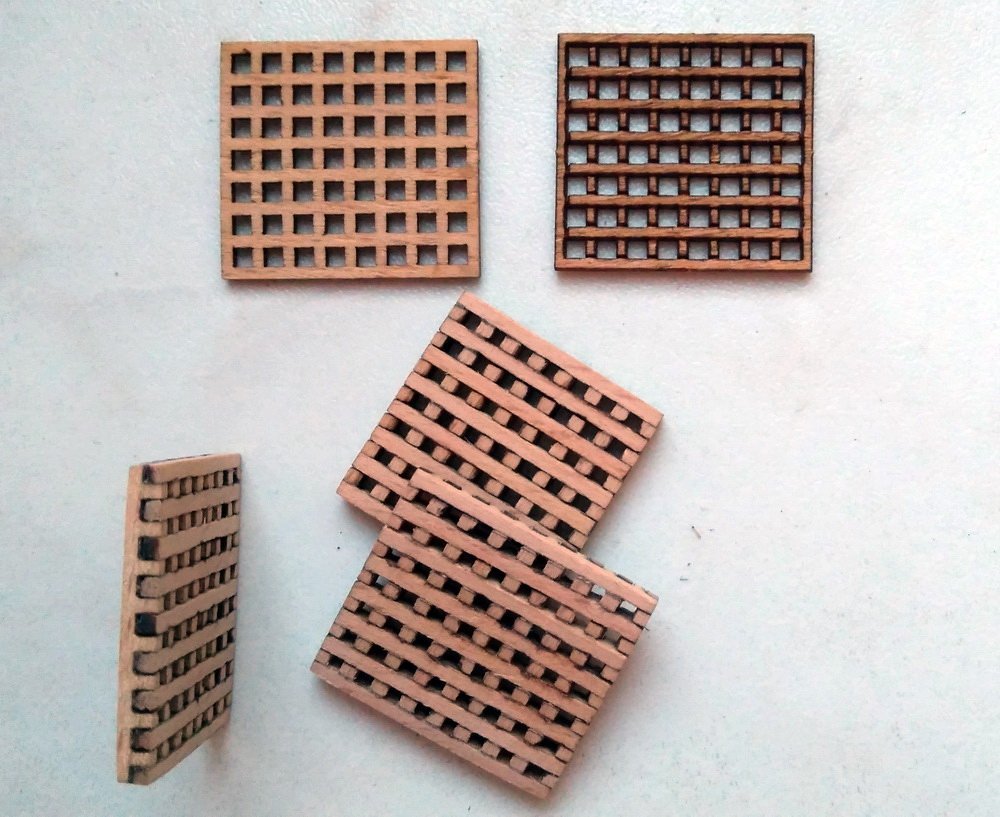
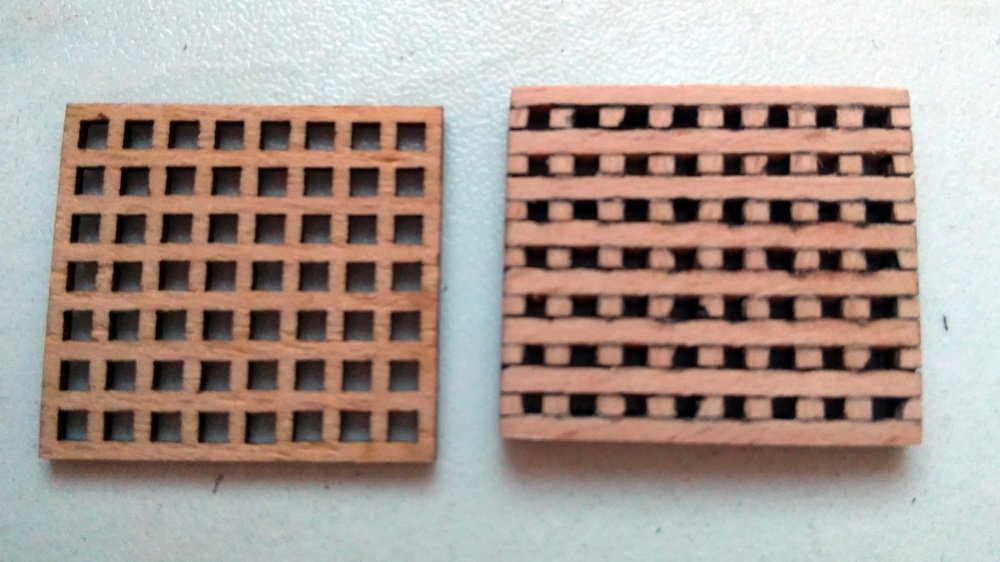
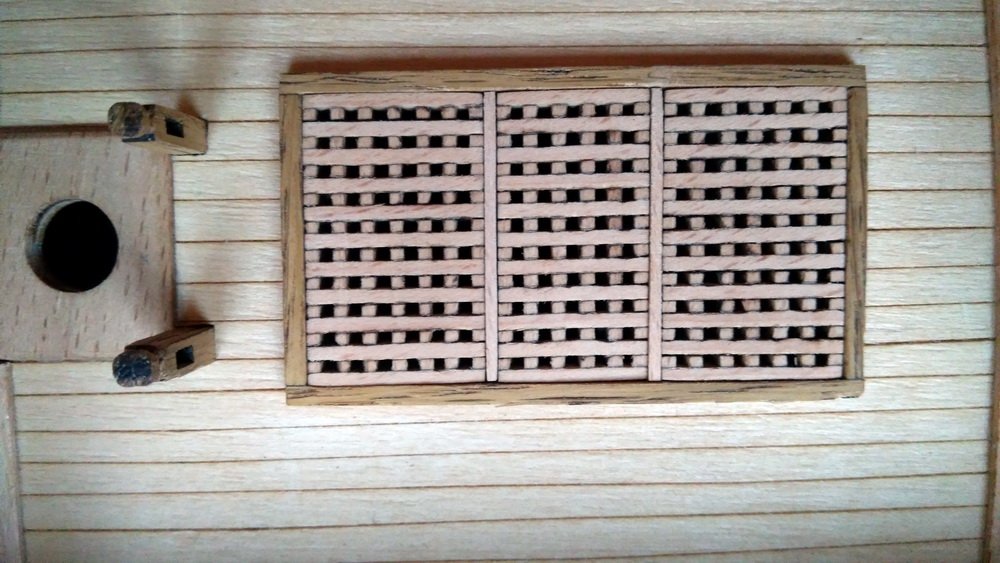
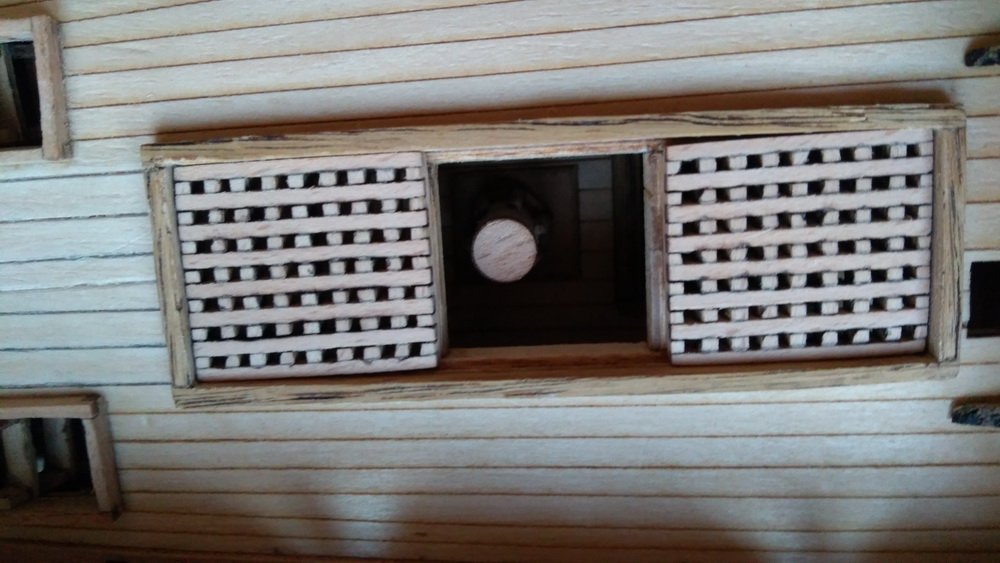
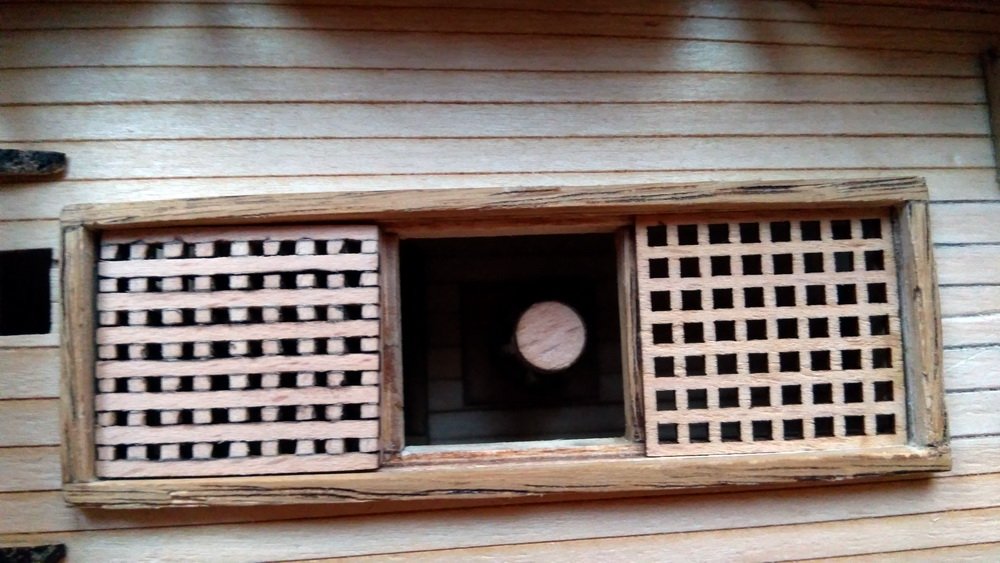
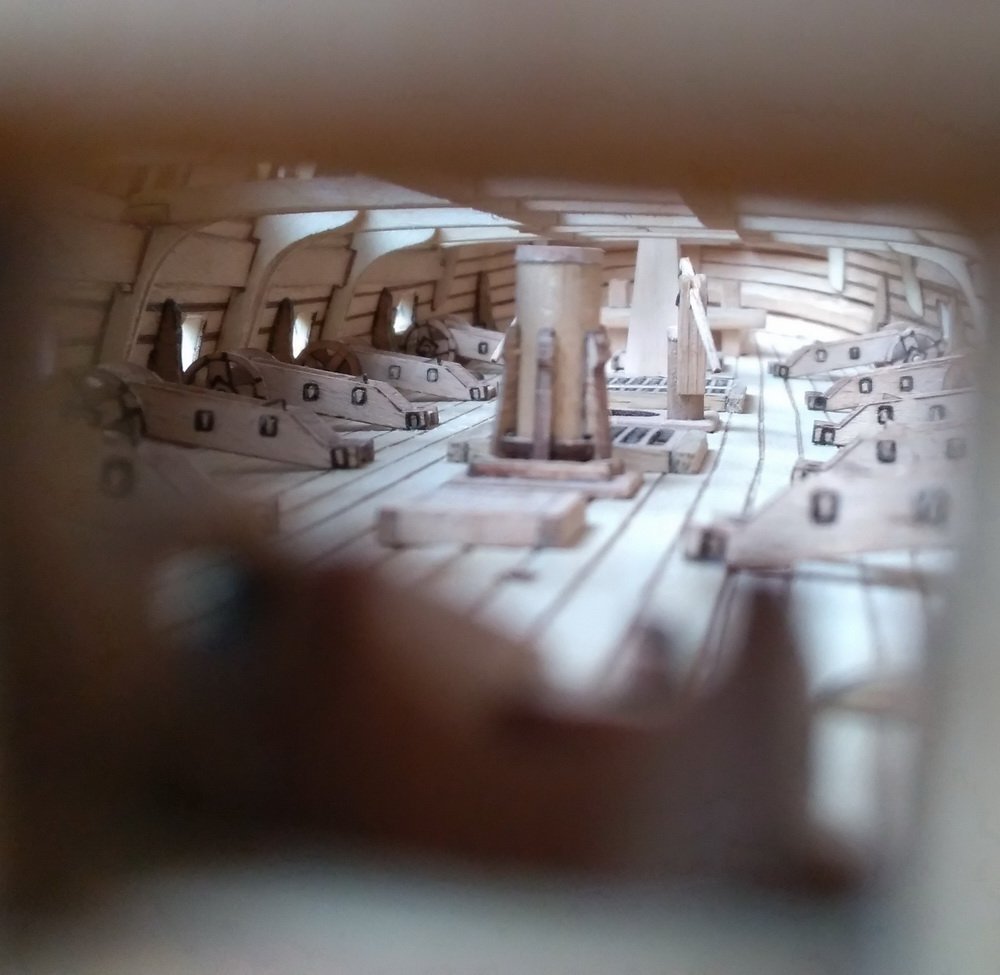
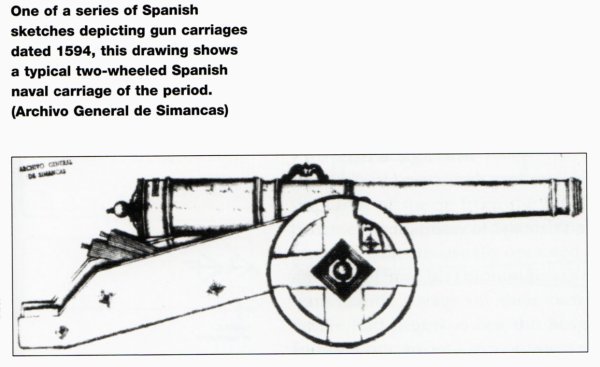
.jpg.aeee1d01bd416c218000e837d292c183.jpg)
